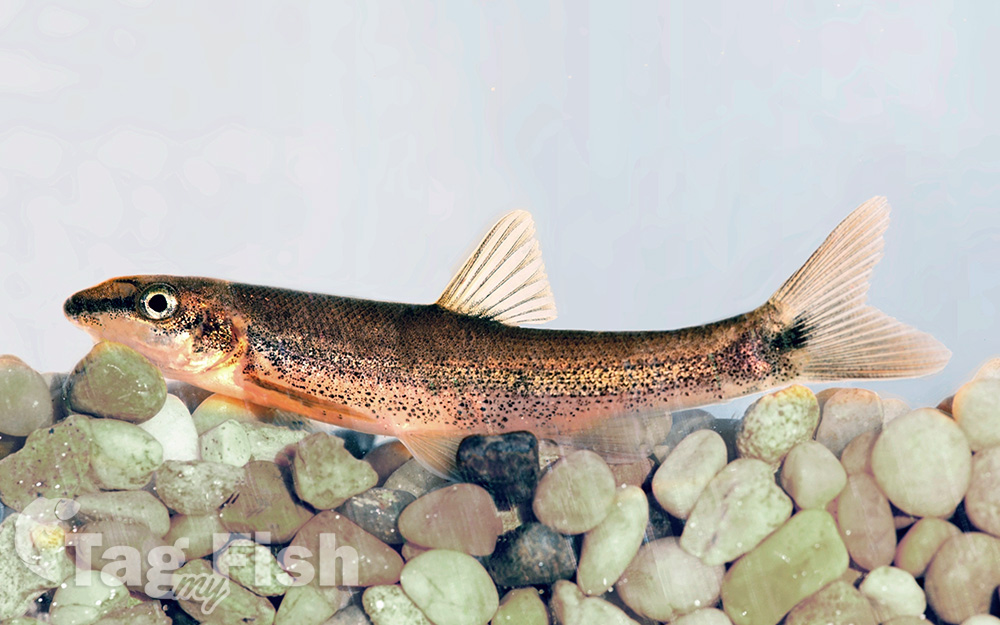Longnose dace
(Rhinichthys cataractae)

Classification
General data
The longnose dace (Rhinichthys cataractae) is a freshwater minnow native to North America.
Rhinicthys means snout fish (reference to the long snout) and cataractae means of the cataract (first taken from Niagara Falls).
Longnose dace are small, typically less than 10 cm and characterized by their fleshy snout that protrudes past the mouth.
They are well adapted for living on the bottom of fast-flowing streams among stones. Longnose dace eat algae and aquatic insects and are important forage minnows for larger predatory fish.
Longnose dace can be mistaken for suckers because of their subterminal sucker-like mouth. However, longnose dace (like all members of the family cyprinidae) lack small fleshy projections, called papillae, on their mouths.
Juveniles have a black lateral line that extends from the beginning of the eye to the caudal fin that fades as the fish matures. The lateral line in juveniles is not present in all populations. In adults, the dorsal side is dark green to black, the lateral side is darkish to silvery with mottling often present, and the ventral side is pearly. Both adult males and females may have bright orange-reddish colouration at the base of pectoral, pelvic, and anal fins and on the upper lip. This colouration is typically associated with breeding males in the subspecies Rhinichthys cataractae cataractae, but the validity of this subspecies has yet to be confirmed. Museum specimens of females also show intense orange-reddish colouration at the base of the fins and upper lip, therefore colouration is not an accurate predictor of sex.
The maximum length of longnose dace is 170 mm, but they are usually less than 100 mm.
Longnose dace have the widest distribution of any cyprinid in North America, with a range reaching as far south as the Rocky Mountains in northern New Mexico and as far north as the Mackenzie River near the Arctic Circle and across the continent from the Pacific to Atlantic coast. Multiple refugia during the most recent glacial maximum may explain the broad geographic distribution of longnose dace. There were up to three possible glacial refuges during Pleistocene glaciations: the Pacific, the Mississippi and the Atlantic. Longnose dace on the Quebec peninsula likely originated only from the Atlantic refuge, in contrast to other fish species on the peninsula that originated from multiple refugia. Longnose dace in northwestern North America originated from a Pacific refuge.















